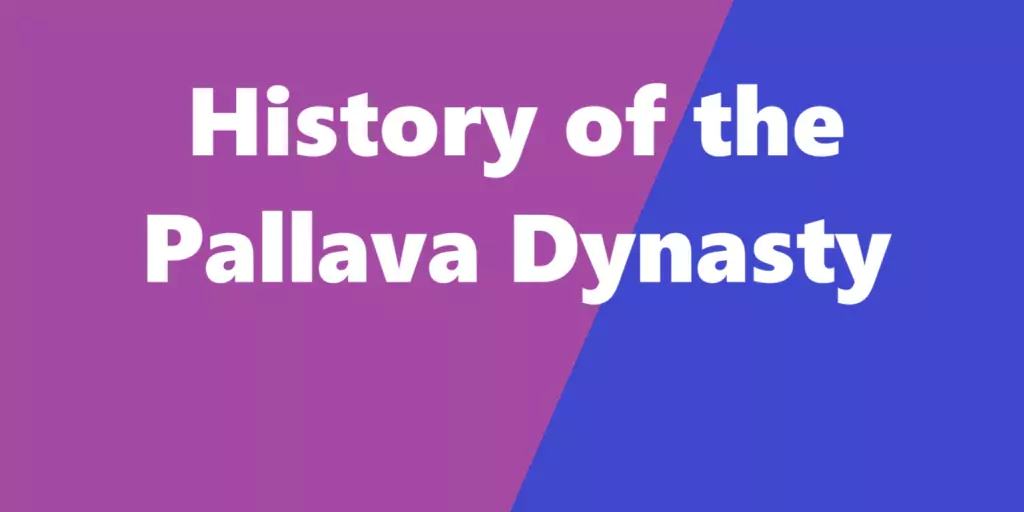The Political History of the Pallava Dynasty: Rise, Reign, and Decline
After the collapse of the Satavahana Empire in the first half of the 3rd century AD, the Pallava kingdom was established centered around Kanchipuram on the banks of the Krishna River. It was a South Indian dynasty. They ruled parts of Tamil Nadu and Andhra Pradesh between the 3rd and 9th centuries CE.
- The Political History of the Pallava Dynasty: Rise, Reign, and Decline
- Political history of the Pallava dynasty
- Sivaskandavarman
- Simhavishnu (575-600 AD):
- Mahendravarman I (600-630 AD):
- Narasimhavarman I (630-668 AD):
- Mahendravarman II (668-670 AD):
- Paramesvaraman I (670-695 AD):
- Narasimhavarman II (695-722 AD):
- Nandivarman II (722-796 AD):
- Decline and Fall:
This article is about the Pallava Dynasty. Studying the Pallava Dynasty for the UPSC and other competitive exams can be quite fascinating as it offers insights into the rich cultural and architectural heritage of ancient South India.
Key Points of Pallava literature
- Sanskrit or Prakrit may be the official language of the Pallavas because these two languages are used in the majority of their inscriptions. The Pallavas were patronized by two prominent Sanskrit scholars.
- Bharavi: He was at Simha Vishnu’s court. Kiratarjuniya is the name of the book he wrote.
- Dandin: He was present in Narasimhavarman II’s court. His work Dashakumarcharita has been translated into many different languages.
- Tevaram (Saiva Literature): These included the first seven volumes of Tirumurai, a twelve-volume compilation of religious hymns written by Saivas. Sixty-three Nayanars, or Tamil Saiva poets who are saints, wrote them.
- A compilation of 4,000 Tamil Vaishnava poetry is called Nalayara Divya Prabandham (Vaishnava Literature). Twelve Alvars, or saintly poets of Tamil Vaishnava tradition, wrote them.

Political history of the Pallava dynasty
- The Pallavas have an unclear origin story. Historians have put forth a number of theories.
- They are an ethnic group of the Parthian people, an Iranian tribe that migrated to South India over time, according to some historians.
- Some claim they are an indigenous dynasty that mixed elements from several tribes and emerged in the Southern region.
- According to some researchers, they originally settled in the Tondaimandalam region near Madras and are of Naga descent.
- They are descended from a Chola prince and a Naga princess of Manipallavam (an island off the coast of Jaffna, Sri Lanka), according to another theory.
- Some others believe that the Satavahanas were feudatories with the Pallavas.
Sivaskandavarman
- Sivaskandavarman was the first ruler of the Pallava dynasty.
- Their capital was Kanchi in South Madras and their dominions extended from the Krishna River to the Bellary district. Ashwamedha yajna was held during his reign.
- Then there is the name of a Pallava king named Vishnugopa who was probably defeated by the Gupta emperor Samudragupta in the 4th century AD.
Simhavishnu (575-600 AD):
- A continuous history of the Pallava kings is available during this period.
- During the reign of King Simhavishnu, the Chola, Pandya and Chera kings of the far south submitted to him.
- Reportedly, he also sent military expeditions against the Sinhalese.
- He belonged to the Vaishnava religion. Bharbi, the author of ‘Kiritarjaniyam‘, was his poet laureate.
Mahendravarman I (600-630 AD):
- The Pallava-Chalukya conflict intensified during the reign of Mahendravarman I.
- He was defeated by The Chalukya king Pulakesi II and the province of Bengi was lost to him in a battle known as Pullalur.
- During his period, the custom of building temples started by cutting mountains.
- He composed a drama called ‘Mattavilas-Prahasana‘ in Sanskrit language.
- He holds the title of ‘Gunabhara‘. He was also known as ‘Vichitravitta‘ and ‘Pallavamalla‘.
Narasimhavarman I (630-668 AD):
- He was the greatest ruler of this dynasty.
- Apart from his military achievements, he was also a patron of art and architecture.
- After defeating the Chalukya king Pulakesi II, he assumed the title of ‘Batapikonda‘.
- Besides, he defeated the power of South Cholas, Pandyas, Cheras, etc., and became omnipotent in South India extending across parts of present-day Andhra Pradesh, Tamil Nadu, Karnataka, and Kerala..
- Sinhalese ruler Manavavarman was helped by sending Dura’s naval expedition to Sinhalese.
- The famous Ratha temples of Mahabalipuram were built during his period. During his reign, Harshvardhan came to India.
Mahendravarman II (668-670 AD):
- Mahendravarman II reigned for only two years and was defeated and killed by Vikramaditya I, son of the Chalukya king Pulakesi I.
Paramesvaraman I (670-695 AD):
- During the reign of Paramesvaravarman I, the Chalukya king Vikramaditya I drove out all the Pallava armies from the Chalukya kingdom, crossed the Tungabhadra, captured the Pallava capital Kanchipuram and advanced up to Trichinpalli.
Narasimhavarman II (695-722 AD):
- Narasimhavarman II ascended the throne with the title ‘Rajasingha‘.
- During his reign, the famous Kailasanath temple was built and the construction of the Mahabalipuram temples was completed.
- During his reign, the new art style developed in Pallava architecture and sculpture is called the ‘Rajasingha Style‘.
- The famous Sanskrit scholar Pandit Dandin was his poet laureate.
Nandivarman II (722-796 AD):
- Taking advantage of the weakness of the Pallavas, the Chalukya king Vikramaditya II defeated Nandivarman and captured Kanchi.
- But Nandivarman quickly allied himself with the Ganga kings and seized the throne of Kanchi.
- He belonged to the Vaishnava religion.
- During his reign, the Vaikuntha Perumal Temple was built in Kanchi.
Decline and Fall:
- The Pallava dynasty gradually declined in the eighth and ninth centuries.
- Their grasp on power was challenged by internal conflict and threats from the rising Cholas.
- After the death of Nandivarman, the Pallava power weakened due to Chola and Pandya attacks.
- The Chola feudatory Aditya defeated the last Pallava king Aparajit Varman in 891 AD and destroyed the Pallava power.

